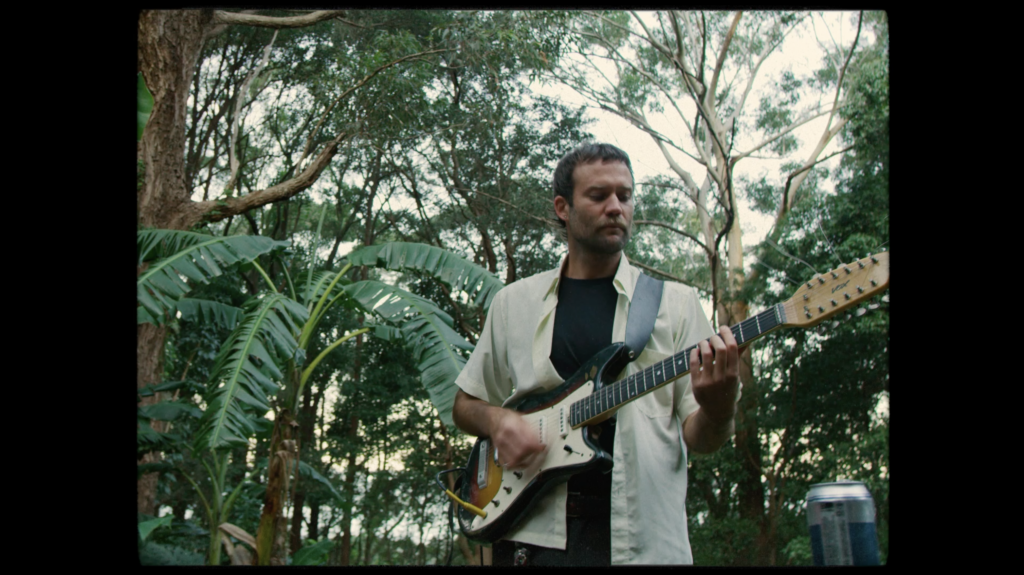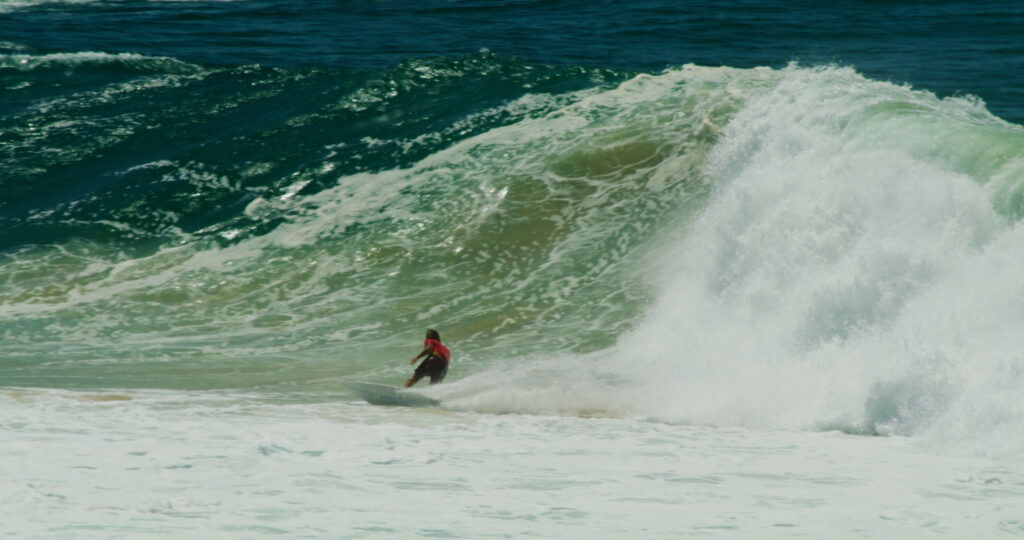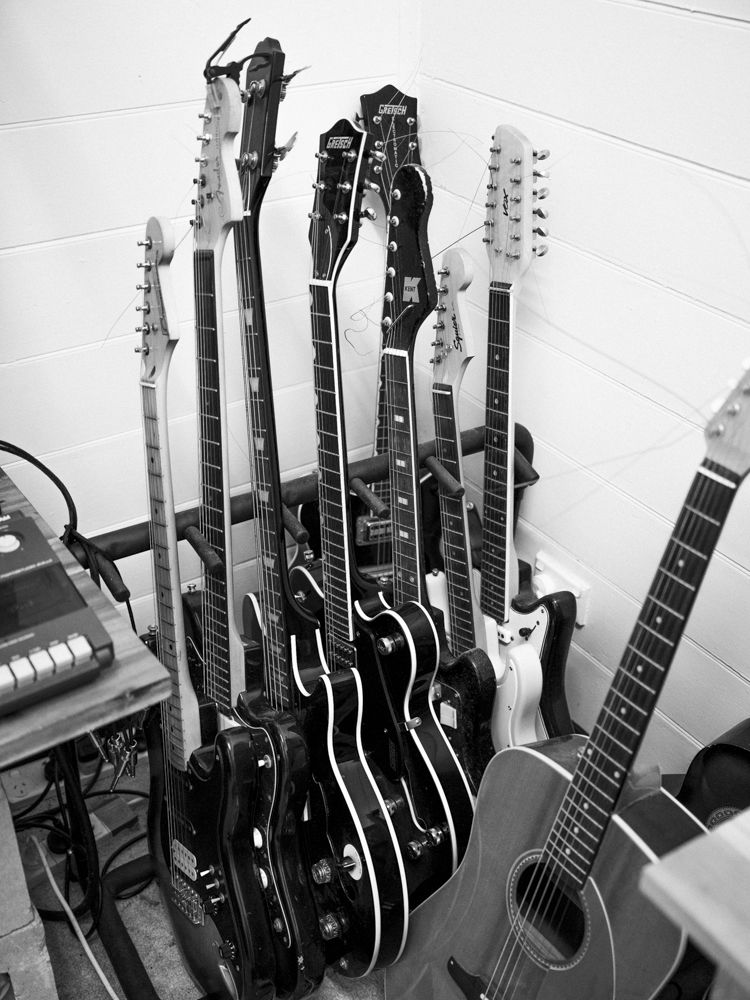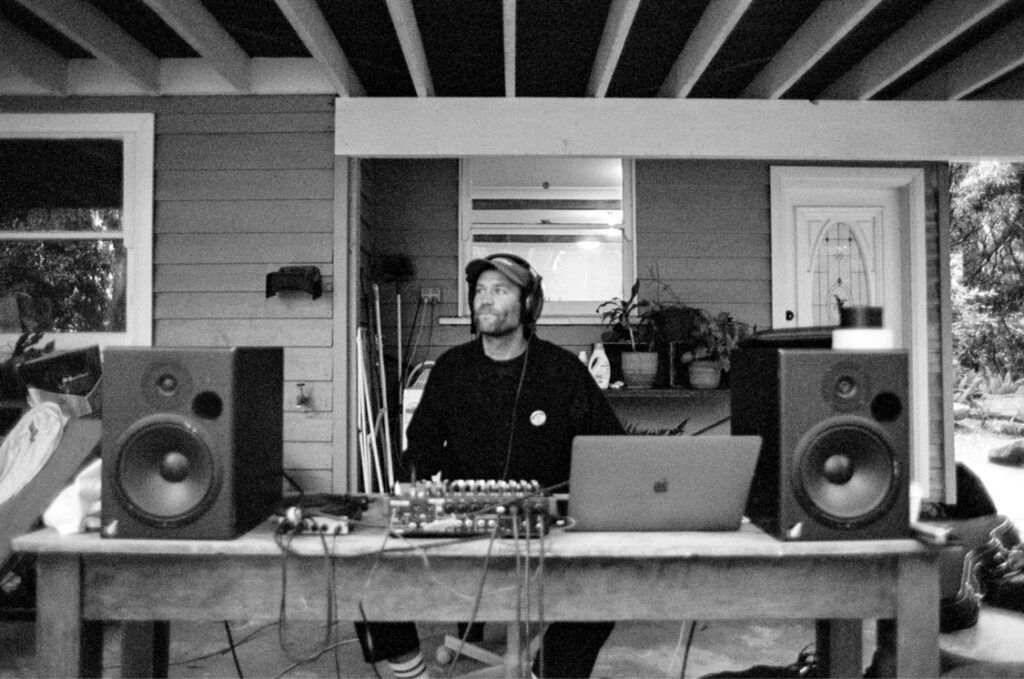Here’s How Rasta’s Electric Acid Surfboard Test Soundtrack Came To Life
An interview with Stab’s resident music maker, Rick Snowden.
When Noa Deane was choosing the soundtrack for Mash, he was forced to make a decision: shell out his own cash to license music, or, make all the music himself.
After having his prior film, Nozvid, taken off YouTube at 300k plays for copyright issues on one song (Basement Jaxx’s “Where’s Your Head At?”), Noa chose door number two. He explained the decision to Stab.
“When you have the luxury of budget like Kai [Neville] did back in the day, you can actually buy sick songs rather than ripping them for free. That’s ideal,” Noa explained. “But the thing is a lot of songs have short licenses on ’em anyway, so even if you go to use one of those songs, you might only get it for three years and they could turn around and take your video down again. So it’s gnarly and expensive and music makes a surf edit. It might cost 60-80 grand to own a song in perpetuity, no one’s got that coin right now.”
Due to Stab‘s frequent output and shallow pockets, we normally opt for licensing music from a monthly subscription service or producing our own bespoke soundtrack for our original projects.
But, how do we do the latter? We send a talented man to his room and pay him a salary.

This man is 37-year-old Rick Snowden, a Byron Bay-based musical polymath who’s been in five bands: The Grease Arrestor, The Jim Mitchell’s, The B-Side Tangent (all on Spotify), and most recently Pop Radio and Mylee Grace. He also produces music commercially for brands, and at one time was an editor at Stab. Though you mightn’t have seen Rick before, you’ve certainly heard him — especially if you’re a Premium member.
At the request of our audience, we recently sat Rick down to find out how the Electric Acid Surfboard Test With Dave Rastovich soundtrack came into existence.
“It’s a weird thing where I found myself being paid to make music for surfing, combining all my passions together, which is super weird and super like, strange sometimes when I think about it,” Rick admitted. “I’m like, how the hell did I get here?”
So, how did he concoct the EAST soundscape?
“Danny [Johnson, EAST‘s Director] and I have quite a lot of chemistry. I get his quirky angle and taste and flavor and it sort of suits my tastes as well,” Rick explained. “Each project is different, so we normally start by sitting down and talking about the surfing itself. Like we really get into how the surfer’s style and approach would match with the music and then we create Spotify playlists. It’s almost like a mood board for the project honestly.”
When it comes down to mastering surfing (like musically mastering), speed is the dependent variable. “The main ingredient for surf music is getting the tempo right. I usually look at the surfing first and have to choose a tempo based on the wave. So, for the short, punchy surf I’ll make it harder, faster, and more energetic whereas a slow pointbreak might lend itself to a bit more groove or psychedelia,” Rick said. “But, I always start by riffing, using pedals to create looping sounds, and laying grooves over that. Then I send stuff over to Danny and he’s like, ‘Yep, loving that’, or ‘let’s tweak that a bit’, and we go deeper on the good stuff to find the right flavor.”

Given Rasta’s unique musical erudition, the EAST soundtrack posed a special challenge for Rick.
“It’s different when you’re making music for the more dialogue-y sections and quirky trailers and stuff. I wanted the sounds to match what Dave was saying,” Rick explained. “Like, you know that one part where he’s explaining that sometimes he likes monotonous, mono-tonal monk chants and other times he likes wild polyrhythmic experimental music? It was actually very fun to get in there and use drum machines and samplers to match audibly what he was explaining. That came down to going into the office with Danny and toying around together on the sounds and building libraries of music for Danny to sort through in his editing dungeon.”
But for the music nerds among us, how exactly did Rick get these sounds from his room to you?
“I’m a Logic boy [Logic is a music software],” Rick said. “Sometimes I’ll bring in a session musician from drums, but most of the time, it’s me playing around with my special plug-ins, drum machines, samplers, and synthesizers that hook up to Logic and let me play around a lot. And luckily, coming from my guitar background, I’ve got a room full of pedals and effects and shit that add the texture I need to get the flavor just right.”
That customized “texture” that we all get to enjoy in Stab projects comes from Rick’s adolescent obsession with gear, sound, and production.

“I started by just jamming to my favorite tracks at home, and then I wanted the pedals that made the same tones as my favorite artists,” Rick explained. “And then all of a sudden, I wanted to copy all the different flavors I was hearing and I started joining bands and learning from the guy on the recording desk and tape machine, and I got obsessed with the actual production that goes into making my favorite songs — I wanted to do the same thing, really.”
What impresses us most about Rick’s music (and the reason we refuse to let him wander off into commercial, cash-clad bliss) is his range. One moment you’re hearing a warped-out jazz standard, the next a clubby acid-house track.
“I go through so many phases with my music,” Rick said. “I started with punk styles back in the day, which got me playing power chords into dirty little guitar amps. The next minute I was into Brian Jonestown Massacre, and then I moved into more fuzzy psych-rock like Ty Segall, King Gizzard. And then I started getting more of an ear for jazz and soul, and now I’m really interested in modular synthesizers and that sort of thing — like Brian Eno’s a big influence for example. I love how composers and movie soundtracks can create complex sounds and textures out of very simple building blocks.”

I couldn’t let Rick go without asking him if he was worried about A.I. poaching his gig (Rasta’s EAST had a couple A.I. tracks, for example).
“I think it’s going to change things in music for sure, but I don’t think it’s as much of a concern as people think,” Rick said. “I think people still want a personal touch. When I watch a film or listen to music, I want to know who the human is behind the work because it makes me appreciate it more. I actually think having the constant presence of A.I. content around us will make us appreciate human-made art and music more.”
If you like what you heard during The Electric Acid Surfboard Test With Dave Rastovich (listen to the full soundtrack here), then you’ll be happy to hear that it’s being pressed into physical vinyl records as we speak by Tunnel Records/Nudie Records in San Francisco. We’ll let you know when they’ll be ready to purchase, and we’ll even be giving someone away to a few lucky Stab Premium members soon.
Let’s end with the words of the late, great Jean-Michel Basquiat: “Art is how we decorate space, music is how we decorate time.” We’re excited to see how Rick will decorate our time next.














Comments
Comments are a Stab Premium feature. Gotta join to talk shop.
Already a member? Sign In
Want to join? Sign Up